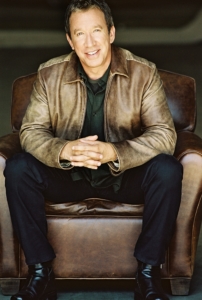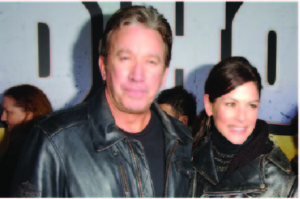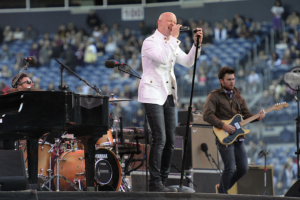Elway Knows Best
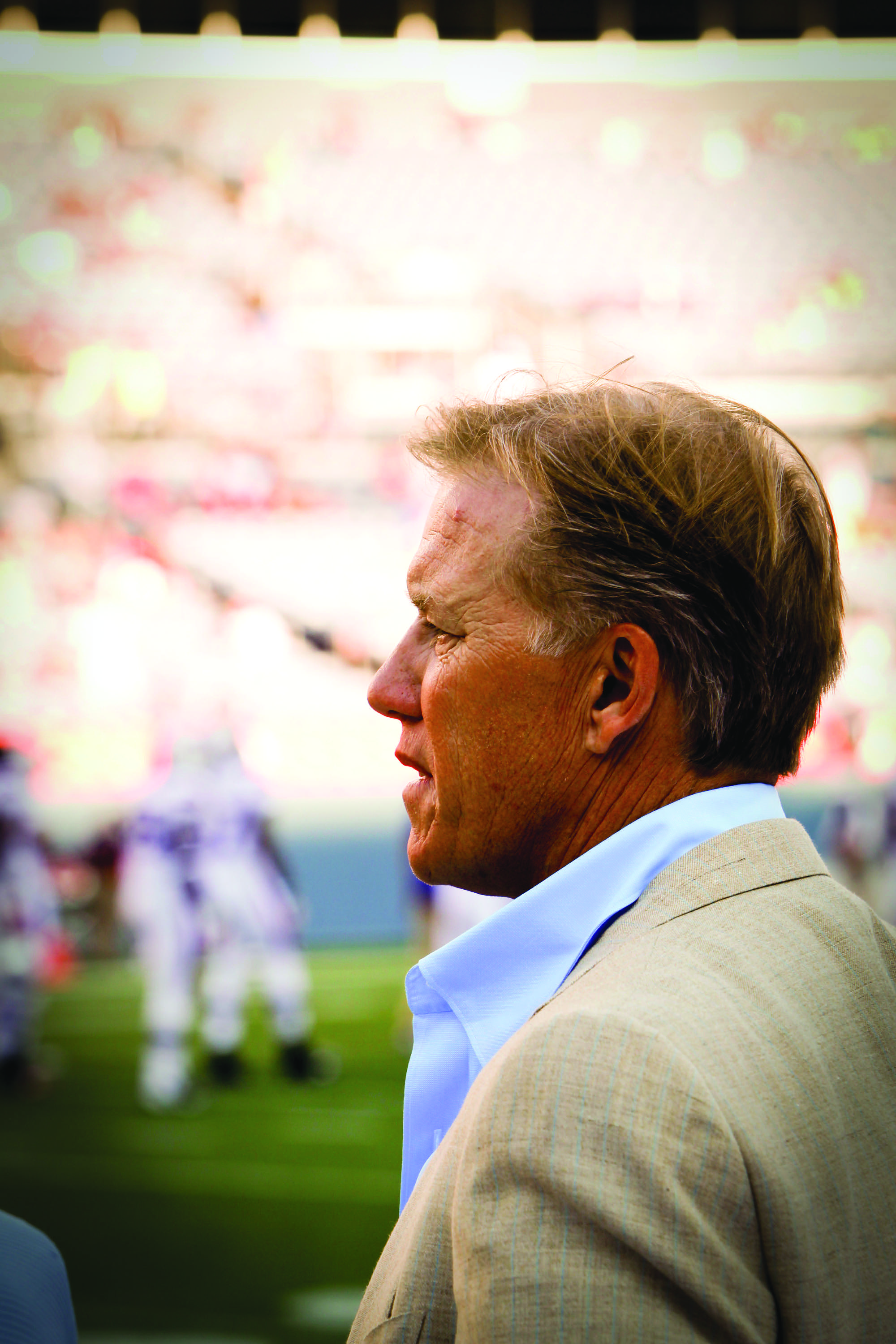
John Elway brings his winning ways from the field to the front office and helps guide the Broncos to another Super Bowl bid.
The year is 1998. He’s 37 years old, likely feeling the effects of being pummeled, beaten down and literally stomped on for nearly two decades. Yet when facing his greatest, most elusive challenge, the concept of giving up is not even a remote option. And that’s when this 37-year-old veteran of the game led his team to its first-ever Super Bowl championship.
In a city where sports rule, John Elway is king. The former Denver Broncos quarterback took his team to five Super Bowls – winning two – and later returned to help lead the Broncos from the sidelines as an executive with the organization. Among sports world superstars, Elway still reigns supreme as an individual who played with a lot of heart and passion, then carried those traits to his endeavors off the field.
A graduate of Stanford University, Elway was a first pick in the 1983 NFL draft; he was then traded to the Broncos where he remained for his 16-year pro football career. Along the way he turned a so-so team into a championship one, eventually racking up back-to-back Super Bowl victories in 1998 and 1999. He earned nine Pro Bowl selections and was inducted into the Pro Football Hall of Fame in 2004.
And through it all, John Elway has never lost his passion for the team, nor his focus on the win. Today Elway serves as GM and executive vice president of football operations for the Denver Broncos, and it’s clear he is exactly where he should be at this time in his career. Whether throwing a pass on the field or watching the play from the side, Elway has earned a unique brand of respect that is both an inspiration and a constant reminder of the great player fans loved to watch during his remarkable career.
As the Denver Broncos kick off their 2014-15 season, Denver Hotel Magazine spoke with Elway to learn a bit more about the man – on and off the field.
DHM: When you first moved here from California, did you think Denver would become your permanent home?
Elway: I had never been to Denver before so I didn’t know a lot about it. I went to high school and college in California, so I really liked California. Not knowing how long I was going to be in Colorado I thought, especially early in my career, I would end up in California. But I played here for 16 years and had four kids, and by the time I retired from football they were all in school and embedded here in Colorado. So we stayed here and by that point in time I never thought about going back to California. So I have definitely turned into a Coloradoan and this will always be my home.
DHM: What is your favorite thing to do
in Colorado?
Elway: I’m a golfer so obviously I play a lot of golf. I’ve always enjoyed getting up to Vail and spending time in the mountains, doing some hiking. It’s a way for me to feel like I can really get away, and plus you’re in the mountains! One of the best secrets about Colorado is how nice the mountains are during the summertime. It’s neat to get up there. Obviously people think about skiing and don’t realize how nice the mountains are during the summertime. I’m not a skier so I enjoy them much more during the summer.
DHM: Speaking of golf, do you believe great golfers have natural talent or is that something anyone can pick up without having athletic ability?
Elway: I think you have to have athletic ability. There is a lot to it, hand-eye coordination and a lot of physical ability that has to go into golf, as well as the ability to compete. The mental side of a golf game is so great – there is a lot of mental toughness involved, and I think golf, like any other sport, takes a tremendous amount of physical talent as well as mental talent to be great, to be playing on the PGA tour.
DHM: Who is your sports hero?
Elway: The guy who was my hero growing up was Roger Staubach who played for the Cowboys. He was a guy I respected and I liked his style of play, which ended up being a lot like the way I played. I also liked the way he was off the field. He’d been in the Navy and he was a success in the business world. He was a guy who provided a lot of inspiration for me both on and off the field.
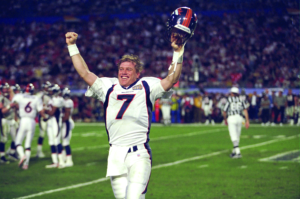
DHM: Now let’s talk about ELWAY’S, your restaurant. What is your favorite dish?
Elway: Before we started the restaurant I’d always loved a bone-in ribeye and wanted to have it on the menu. When we decided to do the restaurant the bone-in ribeye was the marquis item we wanted. Tyler, our chef, does a tremendous job and it’s a great piece of meat.
DHM: Okay, now let’s talk some football. Which NFL player today reminds you most of yourself?
Elway: I would say Ben Rothlisberger with the Steelers. He’s a guy who moves around quite a bit, makes a lot of plays with his legs and also does a good job and fields real well from the pocket.
DHM: Do you think the present-day Broncos team is Super Bowl quality?
Elway: I do think we have a chance. We made it there last year and got beat by The Seahawks, but I really believe going into (training) camp this year, if you look at us on paper, we’re more talented than last year. So I definitely think we have the ability to be world champions. There is a lot of work ahead of us and a lot of things we have to do. Things have to fall your way a little bit – you have to get a little bit lucky and you have to stay healthy, but if we can come together and gel we have the ability to make it.
DHM: Do you think the present-day Broncos would have thrived in your era of football?
Elway: I think so. I think with the talent we have on our team we would have been very competitive. I think the rules of the game have changed quite a bit. The offensives are a lot more open now than when I played. The rules have changed the game so that quarterbacks don’t get hit nearly as much as they used to, which is a good thing because it keeps them healthier and the great ones are able to play longer in the game because it’s not such a physical load on them. And the passing game is a lot more prevalent now. Even though we threw the ball quite a bit when I played, it’s just more reliant on quarterback play as well as a passing game. So I think we could have competed and I think defensively we’re physical enough that we could have competed with the teams back when I played.
DHM: Has your perspective of professional football changed after seeing it from an executive position?
Elway: No it hasn’t. I enjoy the position I’m in. Unfortunately as a football player your career is going to end and you retire at a very young age compared to when most people retire. If you’re lucky you retire in your 30s, so my perspective is that I enjoy being a part of the game again, even though I can’t play and I can’t play quarterback. But I enjoy having the control and trying to put the puzzle together. As a quarterback you have all the control inside the lines and now in the position I’m in I have control of everything outside the lines and really no control inside the lines. So it’s a different perspective but I enjoy it and think I use a lot of what I learned in my playing days about being in the locker room, the type of guys I like playing with, the different personalities. There are so many different personalities on a 53-man roster and how to put those all together has definitely helped me.
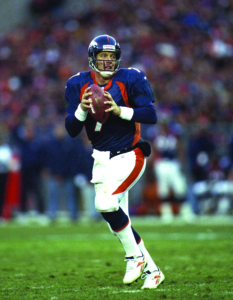
My dad was a football coach and ever since I can remember, Saturdays or Sundays in the Fall there was a scoreboard, and I’m glad to be a part of that again and to know how we did each week based on what’s on the scoreboard.
DHM: What would you say has been the biggest challenge you have faced as a Broncos executive in the front office?
Elway: When you’re in the entertainment business I think one of the things that is probably the most difficult is that you’re selling human beings. You’re selling players and their ability to play the game of football, so the entertainment side comes from how the players play and the coaches coach. Any time you have that many people, (I think we have more than 200 people in the organization not counting players), and managing that many personalities and egos is the biggest challenge in terms of trying to get everyone going and on the same page. To me that’s the greatest challenge and we’ve been fortunate here with the Broncos to have such great people, which has made this a lot easier. But to me it’s always been the challenge of trying to get everyone going on the same page and to the point where everybody understands our goal, which is to be able to provide a competitive football team that can compete for world championships year in and year out. That’s hard to do and as I said, managing those egos and managing the personalities sometimes gets to be challenging, but I’ve been very fortunate here in the fact that I’ve worked with a lot of great people.
DHM: Favorite Broncos memory?
Elway: My favorite memory was when we won Super Bowl XXXII. It was out in San Diego, and I kneeled down on the last play of the game. We had finally won a Super Bowl, the first Super Bowl for the Broncos and the first one for Colorado. That was definitely the highlight. We won the Super Bowl again the following year and that was very special, but it didn’t come close to the first one because we’d been there four other times and had lost, and we were heavy underdogs against the Packers. We were 14-point underdogs and they were defending champions. Nobody really gave us much of a chance to win that game, so to be able to pull it out and win it and bring that world championship to Colorado was the best.


